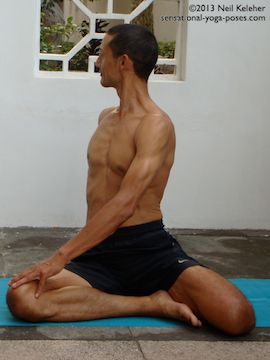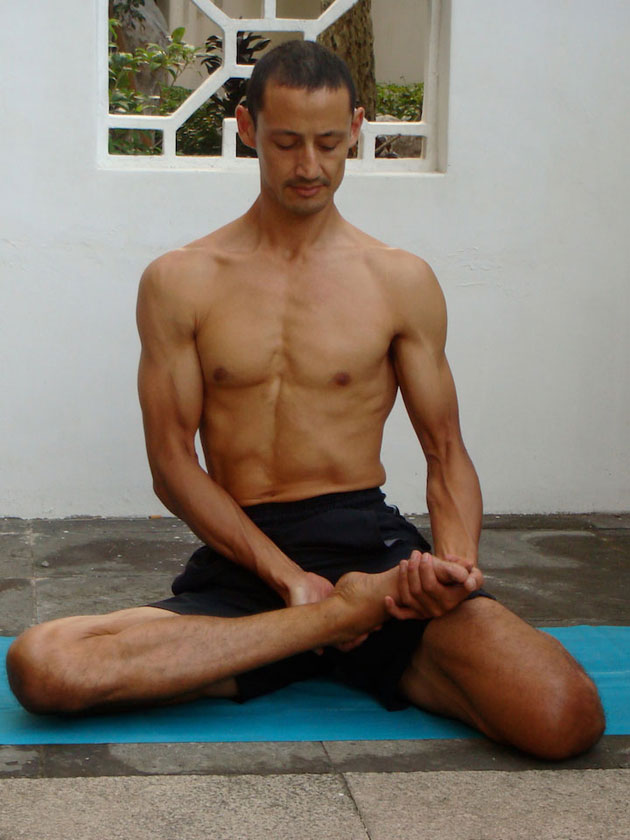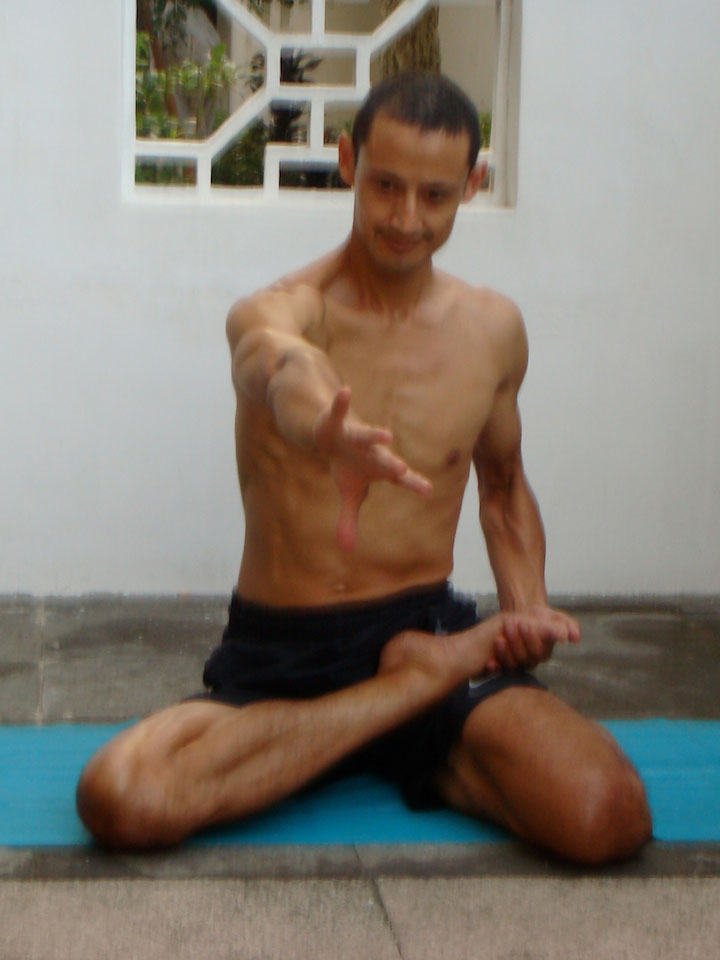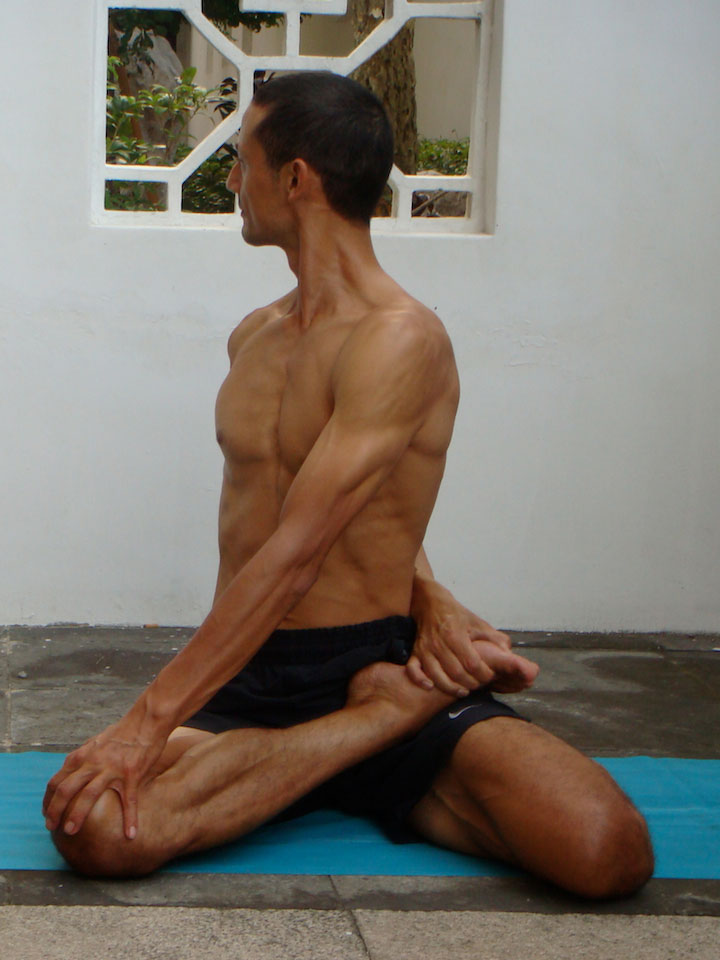Bharadvajasana
Twisting spine and hips and releasing the low back
Bharadvajasana is a seated twisting yoga pose as well as a binding pose.
One of the reasons that I like this yoga pose so much, especially when grabbing my foot from behind my back, is that it tends to "release" my lower back. (Another good pose for "releasing the lower back" this is triangle pose.)
In Bharadvajasana one leg is in hero position with the shin folded to the outside of the thigh. The other leg is in lotus with the top of the foot on top of the other thigh.
Normally the twist is towards your lotus leg side. However, on occasion I twist towards the hero leg side.
Hero pose and Lotus Pose are "opposites." In lotus pose the thigh is externally rotated. In Hero pose the leg is internally rotated. Bharadvajasana has them both which gives it an interesting asymmetrical balance.
Hero and Pressing Your Sitting Bones Down
The first part of getting into bharadvajasana is folding your shin to the outside of your thigh in hero pose. If twisting to the right then fold your left shin in hero.
Prior to twisting and prior to putting your other foot into lotus you can sit tall with your ribcage facing the front. Lift your ribs and pull your head back and up.
If your hero side sitting bone is lifted try to shift your weight to that side and use the weight of your body to gently push your sitting bone down.
If putting your leg in hero pose causes knee pain then you can either forego this pose or try sitting higher on a block.
Once your hero leg is comfortable you can then work at placing your other foot in lotus.
Lotus and an Alternative for Lotus
If you can't do Lotus, then an alternative is to place your foot against the inner thigh of the other leg.
See yoga kneeling postures for other options using this foot position.
If you are doing Lotus,
- Try to keep the inside edge of your Lotus foot straight rather than caved in. (This can strengthen your ankle and prevent overstretching of the outside of your ankle.)
- Try to place the blade of your foot in the crease where you thigh connects to your lower belly.
- Position your heel so that it is pressing against the opposite side of your lower belly. (If your left foot is in lotus then place the heel against the right side of your lower belly.)
- If your lotus knee doesn't touch the floor, you might want to place a yoga block or book beneath it.
All together, these adjustments, if done mindfully can help position your lower leg and thigh in such a way that your knee is kept safe.
Perhaps the most important thing of all to keep your knee safe when doing lotus or postures that involve lotus is to move into it slowly and mindfully.
Pay attention to your knee and listen when it talks.
Twisting
With your legs positioned you can twist towards your lotus leg side, in this case to the right.
Reach your right hand behind you to grab your right foot. If you can't reach it you can use a towel, wrap it around your foot and grab the ends of the towel.
Place your other hand on your right knee. Make sure that your right knee is either on the floor or if this isn't comfortable, support it with a block or book. Then press down with your left hand to help lengthen your spine and ribcage up.
Make your right ankle (the lotus leg) strong and use it as an anchor for your right hand. Use your right hand to pull the right side of your ribcage back. You may find that your lower back "releases" as you do so.
Pull your head back and up and look behind you.
Control your body weight and use it to help keep your right sitting bone (hero side) pressing down.
Sequencing Suggestions for Bharadvajasana
Bharadvajasana, perhaps because of the combination of hero and lotus, tends to be a cooling down pose. As such I often like to use it towards the end of a practice or after something arduous like wheel pose.
It could also be used as part of a preparation for working towards full Lotus pose.
Published: 2011 04 28
Updated: 2021 02 10







